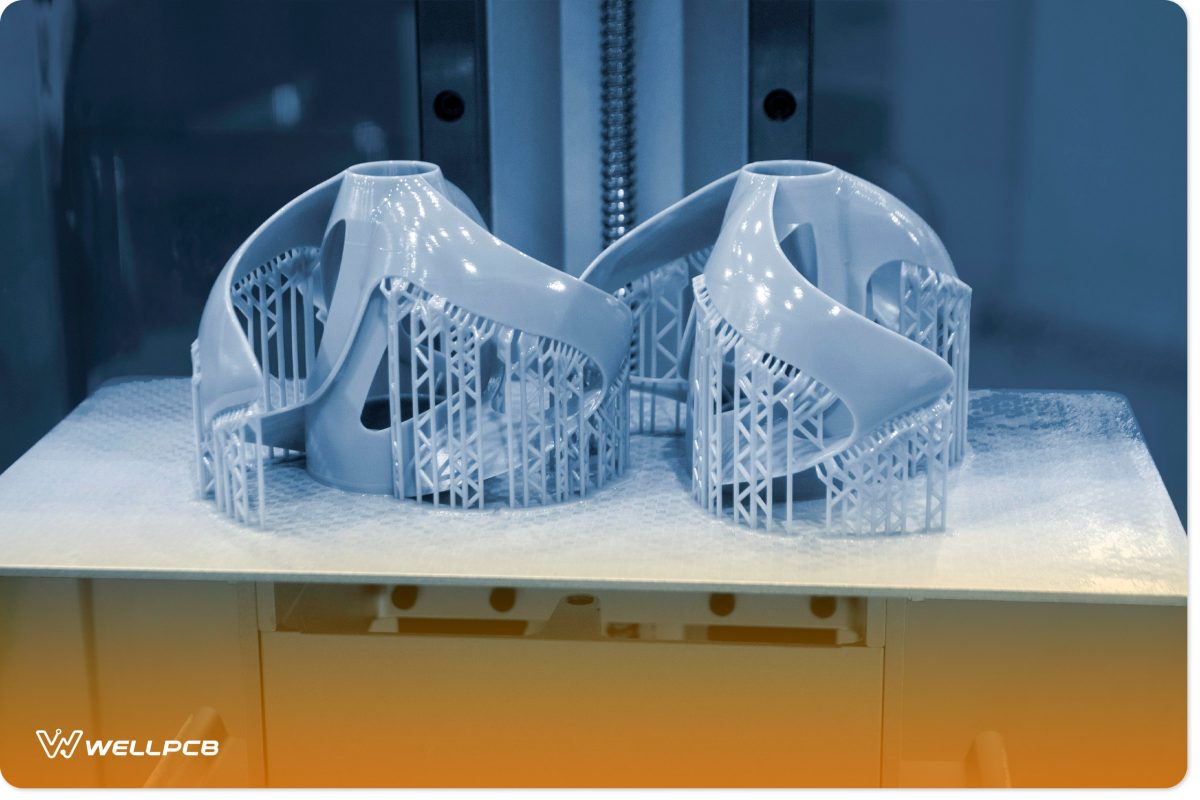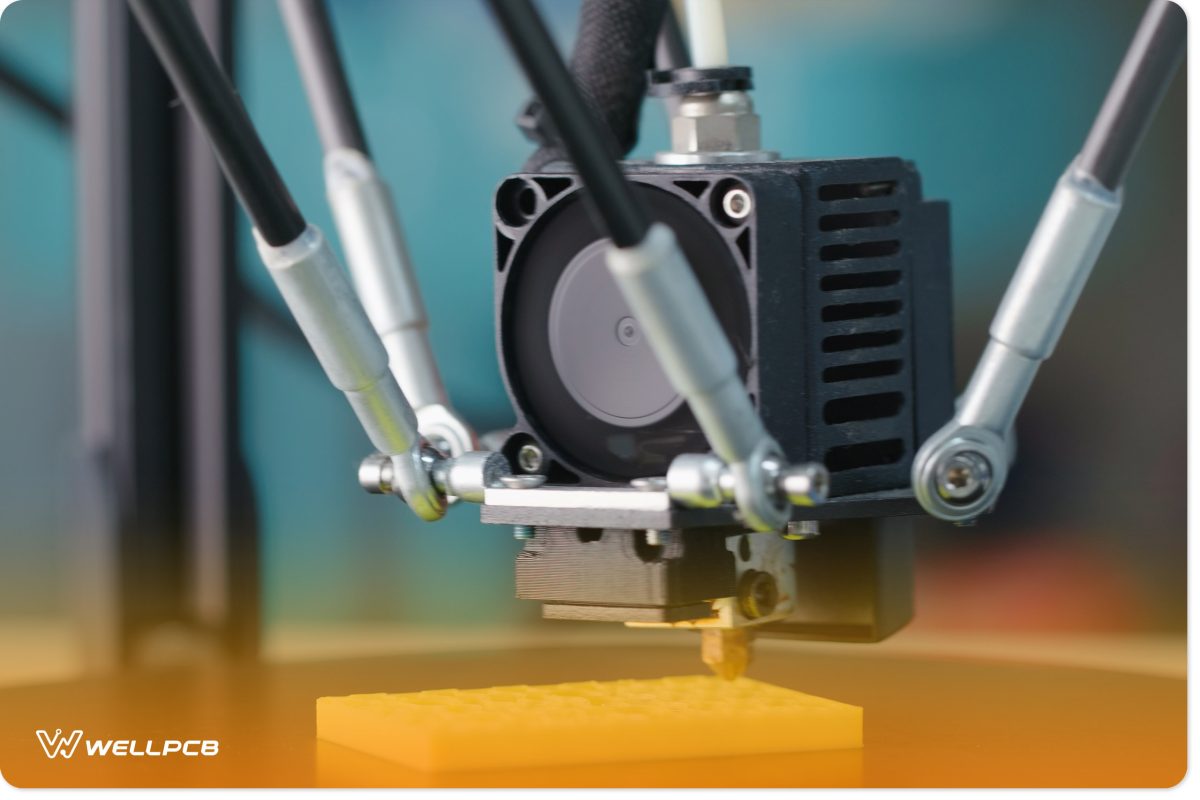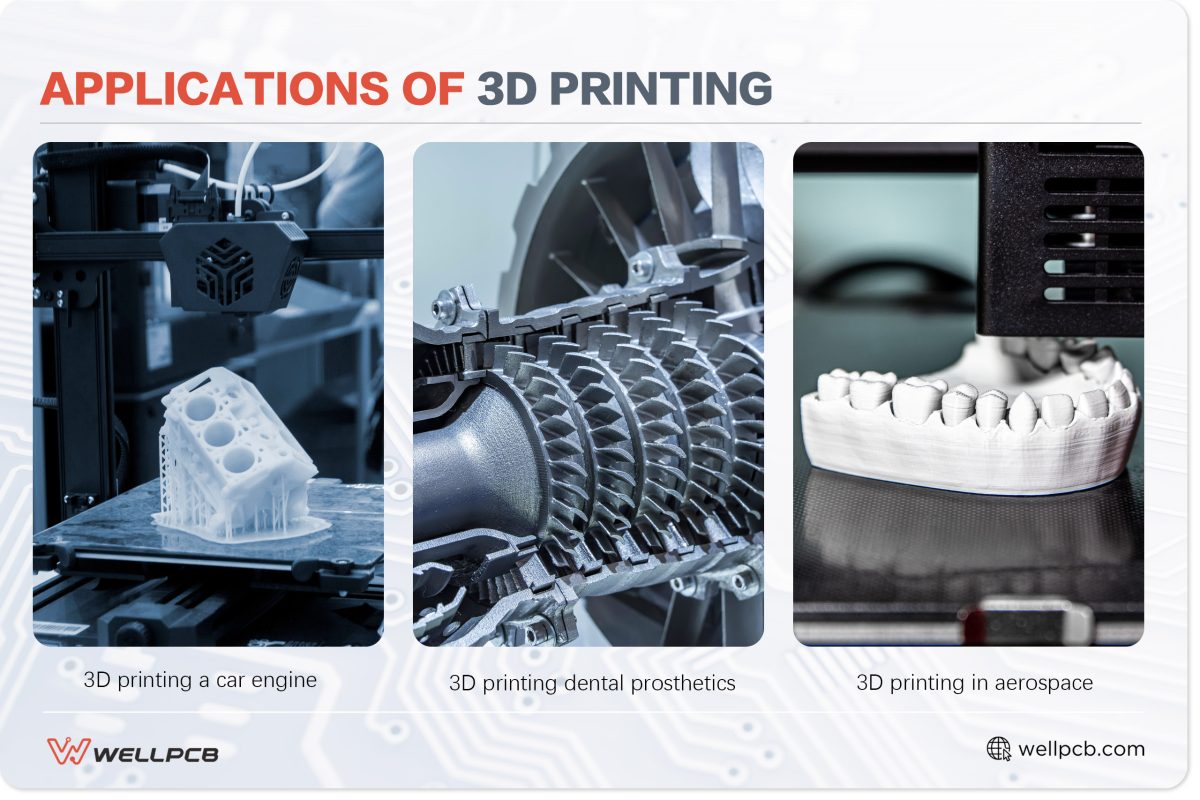Contents
- 1 What Is 3D Printing and How Is It Used in Business?
- 2 What Are the Benefits of 3D Printing for Large Enterprises?
- 3 What Are the Benefits of 3D Printing for SMEs?
- 4 Industry-Specific Applications of 3D Printing
- 5 How to Choose the Right 3D Printing Service Provider
- 6 The Future of 3D Printing in Business
- 7 Conclusion
What Is 3D Printing and How Is It Used in Business?
What is 3D Printing?
3D printing is a technology that builds three-dimensional objects one layer at a time, using only the necessary materials for each project.
This differs from traditional methods that typically involve molding or cutting from larger blocks of material.
Businesses create a design file using CAD (Computer-Aided Design) software, which is then sent to a 3D printer. The printer constructs the object layer by layer according to the design specifications.
The Evolution of 3D Printing in Business
3D printing began as a prototyping tool in the 1980s and has since evolved into a crucial manufacturing tool across various industries.
Initially, it was mainly used to create concept models despite the high costs and limited material options.
Over time, the technology has become more precise and capable of working with a broader range of materials. This has led to its widespread adoption in manufacturing sectors such as aerospace, automotive, and consumer goods.
By the 2010s, 3D printing had gained widespread popularity. Businesses now use it for rapid prototyping, mass customization, and on-demand production.
It’s also used in the construction and bioprinting industries. As the technology continues to advance, companies can expect enhanced customization, increased innovation, and greater flexibility in supply chain management.

What Are the Benefits of 3D Printing for Large Enterprises?

Accelerated Product Development and Prototyping:
- Quicker iteration: 3D printing allows for rapid modifications to digital models, enabling quick production of new versions. This fast iteration helps in identifying and fixing design flaws early, preventing costly production delays and enabling faster market entry.
- Rapid prototyping: Large enterprises utilize 3D printing for rapid prototyping, significantly shortening the time from concept to market. This method reduces production cycles and allows for timely optimization of the final product before mass production.
Example: GE Aviation
- GE Aviation harnesses 3D printing to efficiently produce components like fuel nozzles and turbine blades. By integrating all components into a single design, they enhance engine performance and fuel efficiency. Notably, their 3D-printed GE9X engine achieved a 10% increase in fuel efficiency compared to its predecessor, the GE90, through rapid iteration and testing.
Cost Efficiency in Manufacturing
- Material waste reduction: 3D printing minimizes material waste, which is especially beneficial when using expensive composites or metals, significantly cutting down raw material costs.
- Product optimization: With 3D printing services for businesses, large inventories aren’t necessary. This is because enterprises can handle complex geometries in one step and produce parts on-demand, minimizing the number of parts and assembly steps required.
- Labor and tooling costs: Since 3D printing can produce complex parts in a single process, it reduces manual labor and the risk of assembly errors, along with eliminating the need for costly tooling such as jigs and molds.
How Does 3D Printing Drive Customization and Innovation?
3D printing empowers large enterprises to design and manufacture customized products efficiently at scale, without the need for tooling. This capability supports mass customization for diverse market demands.
Companies can also set up local manufacturing hubs near consumer bases. Doing so slashes lead time deliveries for personalized products, allowing businesses to adapt quickly to market trends.
BMW uses 3D printing to create customized, lightweight car parts like dashboard trim slips. The technology reduces production time while ensuring high-end customization at scale.
What Are the Benefits of 3D Printing for SMEs?

How Can SMEs Leverage 3D Printing for Prototyping and Small Batch Production?
- Cost-effective prototyping: Small businesses and startups can quickly produce low-cost prototypes, eliminating the need for expensive tooling and molds typical of traditional manufacturing. This accessibility allows for frequent testing and refinement of product design iterations, which is crucial for SMEs with limited budgets.
- Small-batch production: SMEs can use 3D printing for small-batch manufacturing on demand, reducing inventory costs significantly. This flexibility is ideal for fulfilling custom orders and testing market responses without committing to large-scale production.
How Does 3D Printing Help SMEs Reduce Inventory Costs?
- On-demand production: SMEs can reduce inventory costs by using 3D printing to produce items as needed in limited quantities. This approach conserves capital typically tied up in material and stock purchasing, and lowers warehouse expenses by reducing the need for large storage spaces.
- Agility and cost savings: By avoiding large stockpiles of inventory, SMEs can reallocate funds to other critical areas like product development, market expansion, or marketing. Additionally, the ability to quickly adapt to customer changes with 3D printing prevents overproduction and potential losses from unsold stock.
What Advanced Manufacturing Technologies Are Available to SMEs Through 3D Printing?
- Advanced materials: SMEs can use advanced materials, like carbon fiber, metal composites, and biocompatible polymers, without the need for costly equipment. This makes them more affordable for SMEs and enables the fabrication of highly rigid, lightweight components for industries like aerospace and healthcare.
- Digital manufacturing: By using a cloud-based platform, SMEs can access industrial-grade 3D printing services without hefty upfront investments in technology. This allows for the use of cutting-edge technology on a pay-per-use basis.
- Prototyping: 3D printing enables SMEs to produce prototypes rapidly and cost-effectively, significantly reducing the time and money spent on tooling. This advantage leads to faster production cycles and quicker market readiness.
At WellPCB, we support SMEs with 3D printing services—such as custom designs, rapid prototyping, and small-batch production—so they can avoid costly equipment investments. We also provide material selection advice to ensure products meet specific requirements such as durability and heat resistance, enhancing the overall quality and performance of the final products.
Industry-Specific Applications of 3D Printing

How Is 3D Printing Used in the Automotive Industry?
- Prototyping: 3D printing is pivotal in the automotive sector for rapid prototyping of parts and systems, allowing engineers to test fit, form, and functionality early in the design process. This accelerates design verification and iterations.
- Producing complex parts: Companies leverage 3D printing to produce complex parts that would be difficult or impossible for traditional manufacturing. These parts often require minimal assembly and can have intricate internal structures, leading to lighter vehicle components that improve fuel efficiency.
- Tooling: 3D printing is also used for quickly creating fixtures, jigs, and tools that streamline tasks on the assembly line, improving productivity and reducing downtime.
At WellPCB, we use 3D printers to create custom electronic enclosures for customers in the automotive industry. With extensive PCB manufacturing expertise, we can produce 3D-printed electronic systems for vehicles, including advanced infotainment systems.
What Are the Applications of 3D Printing in Healthcare?
- Medical devices: 3D printing is used to produce bespoke medical devices such as surgical instruments and implants. These can be tailored to each patient’s anatomy, such as custom-fit hearing aids that offer greater comfort and performance. Surgical tools like forceps and retractors of varying sizes and shapes can also be produced on demand.
For example, Stryker 3D uses 3D printing to create titanium implants tailored specifically for patients. This allows surgeons to achieve better outcomes with implants that are custom-designed to fit each patient’s unique anatomy.
- Custom prosthetics: 3D printing allows for the creation of affordable, custom-made prosthetics more quickly than traditional methods, which is particularly beneficial for pediatric patients who require frequent adjustments.
For example, e-NABLE uses 3D printing to quickly and inexpensively create customizable upper-body prosthetics for amputees. - Bioprinting: This advanced area of 3D printing uses bio-inks made of living cells to print biological matter like tissues and organs. While still largely experimental, researchers successfully 3D-printed and transplanted a fully functional bladder in 2004 that remained functional for over a decade. Cartilage, bone, and skin tissue have also been successfully fabricated using bioprinting.
How Is 3D Printing Transforming the Aerospace Industry?
- Lightweight components: Weight reduction is crucial for optimal fuel efficiency and performance for spacecraft. 3D printing contributes to significant weight reduction by allowing the integration of multiple components into a single, more efficient structure with fewer fasteners and joints. Materials like titanium and high-performance polymers such as PEEK are favored for their strength-to-weight ratios and compliance with stringent safety regulations.
- Rapid prototyping: Aerospace benefits from the ability to quickly design and test parts, drastically shortening development cycles and speeding up the time-to-market for new aerospace technologies.
According to a report by Lucintel, the aerospace industry’s use of 3D printing is projected to see a $6.6 billion increase by 2030, driven by demand for lightweight components and faster production capabilities.
These diverse applications demonstrate how 3D printing is revolutionizing industries by enabling faster innovation cycles, creating complex parts more efficiently, and offering customization at levels not previously possible.

How to Choose the Right 3D Printing Service Provider
What Key Factors Should You Consider When Choosing a 3D Printing Service Provider?
- Check if the provider offers technologies like SLA, FDM, and SLS that suit your project needs.
- Ensure the technology matches project requirements such as resolution, material rigidity, and surface finish.
- Verify the quality of materials used, including their thermal stability, flexibility, and durability.
- Evaluate the provider’s ability to achieve precise details and high-level accuracy.
- Determine the maximum size of parts the provider is capable of fabricating.
- Seek 3D printing providers with experience and expertise in your specific industry.
- Check if design optimization services are available to enhance your project.
- Look into available post-processing services, such as assembly, sanding, and painting.
- Review the overall cost, considering all fees to ensure it meets your budget.
- Determine if volume discounts are offered and if pricing is transparent.
When evaluating 3D printing services for businesses, consider the technology offered, lead times, material options, and quality control. Opt for providers with advanced technologies like Fused Deposition Modeling (FDM), which supports a wide range of materials. Also, be sure to assess their scale production capabilities and post-processing services.
WellPCB offers fair and transparent pricing, design assistance, and quality assurance that can meet the needs of your project—no matter the size or niche of your business. We offer various 3D printing technologies and materials for any business seeking reliable 3D printing services.
What Questions Should You Ask Potential 3D Printing Service Providers?
- Which materials and technologies does the company use for 3D printing?
Understanding the range of technologies and materials available, such as SLS, SLA, or FDM, can help you determine the best fit for your project. Providers can also suggest specific materials like biocompatible, electrically insulating, or heat-resistant options based on your requirements. - What is the maximum print volume you can handle?
This question will clarify whether the provider can print all the parts of your design in one go, or if assembly will be necessary. - Do you offer any post-processing services?
Post-processing capabilities like sanding, painting, or coating are crucial for meeting the aesthetic or functional specifications of the finished product. - How do you manage quality control?
Ask about their quality control processes, including post-print inspections and in-process monitoring, to ensure high precision and performance. Confirm if they have relevant certifications like ISO to guarantee quality standards. - Do you provide testing services for printed products?
Check if the provider tests for performance, durability, and structural integrity, to ensure the product meets specifications. - What are the lead times for completing projects?
Knowing the lead times will help you assess whether the provider can meet your production schedules and deadlines. - Can you provide case studies related to similar projects?
Case studies offer insights into the provider’s capabilities, the challenges they’ve faced, and the solutions they’ve implemented. This will help you know what to expect for your project.
The Future of 3D Printing in Business
Staying updated on 3D printing technology trends is essential for maintaining a competitive edge. Here are some important trends to watch:
Emerging Trends in 3D Printing
- Advancements in materials: The introduction of new materials, such as carbon-fiber reinforced plastics, is enhancing the production of durable, heat-resistant, and lightweight parts required across various industries. Large enterprises can use these materials to print specialized components, while SMEs can develop high-performance products without needing expensive manufacturing equipment.
- Automation and speed: The deployment of 3D printers in automated manufacturing is reducing manual labor significantly, while technologies like continuous liquid interface production (CLIP) are accelerating the 3D printing process. While large enterprises can slash project lead times, SMEs can access rapid prototyping and on-demand manufacturing—speeding up development cycles and minimizing inventory needs.
- Customization: Mass customization is set to improve as 3D printing is adopted in industries like consumer goods and healthcare. Consumers will increasingly have access to personalized products that meet their individual needs. Large enterprises can achieve scale customization at a lower cost than traditional manufacturing, while SMEs can stand out from competitors by offering uniquely designed products tailored to their target consumer segments.
- Sustainability: With reduced material waste and on-demand production, businesses are becoming more sustainable. 3D printing is also driving sustainable innovation, such as using recycled or biodegradable materials to fabricate eco-friendly products. Large enterprises can take advantage of this to cut down on resources, meet sustainability targets, and outperform competitors while demand for environmentally friendly products skyrockets. SMEs can meet their sustainability goals by minimizing material waste and reducing overproduction risks.
How Can Businesses Stay Ahead in 3D Printing Adoption?
- Research: Continuous learning about 3D printing technology trends can help businesses stay informed and ready to adopt new innovations. WellPCB, for instance, offers updates on advanced technologies, providing insights into the latest advancements in 3D printing.
- Exploring new materials: Companies are increasingly using high-performance polymers and metals and even combining them to improve product complexity and functionality. Partnering with expert providers like WellPCB allows businesses to explore these new materials and achieve superior product quality and performance.
- Long-term planning: Enterprises should develop long-term 3D printing strategies to stay ahead. These can include production scale-up, embedding 3D printing into digital transformation efforts, and improving product flexibility. At WellPCB, we can help you craft these strategies, so you can capitalize on 3D printing innovations and remain competitive as the technology develops.
Conclusion
Businesses incorporating 3D printing in their manufacturing processes are realizing significant advantages.
The technology accelerates product development, reducing time-to-market and lowering expenses throughout the production process—including cost savings from on-demand manufacturing and reduced material waste.
WellPCB is a leading provider of 3D printing services. Our wide range of capabilities includes rapid prototyping, extensive customization, and swift iterations.
We offer a broad array of 3D printing technologies and a diverse selection of materials to meet any project requirements.
If you have any questions about 3D printing, contact WellPCB today.





